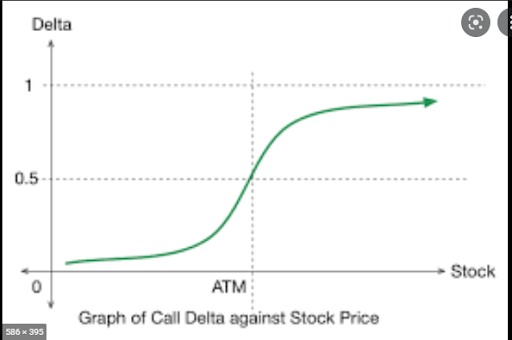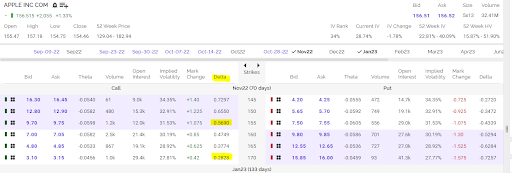Options Mailbag: Picking A Strike
Share

Hey Steve,
I had been ‘taught’ that if you wanted to be straight bullish or bearish a stock and use options for leverage then a deep in the money contract was the way to go since the delta was near 100. You seem to vastly prefer slightly out of the money strikes for your straight plays. Do you have an old post that talks about the logic behind this? Also, is this a long term preference or is it somehow linked to current market conditions?- Brian C.
This is a great question and hits on some of the variables that go into choosing a strike or a strategy. The main two inputs for deciding what approach to take is your expectations for price and time. That is, what size or percentage move do you expect in the underlying and in what time frame do you expect that to happen.
Options are leveraged products (stemming from low margin requirement to control 100 shares per contract), but this leverage can cut both ways. Big profits, as well as bone crushing losses.
Two of the keys to having the “right” kind of leverage becomes a function of delta and gamma. Let’s look at delta today, we can address gamma in another article.
Delta is the expected change in an option’s price for every $1 move in the price of the underlying stock. It can range from 0.00 to 1.00, with calls being expressed as a positive number and puts as a negative number. The rule of thumb is that an at-the-money option has a delta of 0.50.
It is very important to understand that delta is not fixed. It is a function of the underlying stock price and the time remaining until expiration. As an option moves further into-the-money and time decays, the delta increases at an accelerated rate.
For example with Apple (AAPL) trading $156.5 the November $150 call has a delta of 0.55. The Nov.$170 call has a delta of 0.27.
If AAPL moves up to $170, the 150 call would have a delta of 0.91, while the delta on the 170 call would leap to 0.50. As you can see, an approximately $20 move, or 13% would have a larger impact in percentage terms on delta of the further-out-of the money call.
Conversely, as an option moves further out-of-the-money and has more time remaining, delta decreases at a slower rate.
This is a valuable feature of options in that your profits will accelerate as price moves in your direction and losses will decelerate relative to the stock as price moves against you – so profits can pile up faster than losses.
To get to the heart of the question of “what I use”, it really goes back to depending on the situation and my expectations. Since I’m mostly a short-term trader with established entries, targets, and stop prices I try to find the balance that will provide enough time for the thesis to play out and provide a decent bang for the buck.
If I want to make a strong directional bet, that typically means buying an option one strike at-the-money with about 30 days until expiration. This provides sufficient time so theta (time decay) doesn’t come into play and it also offers enough time to leg into a spread.
That said, most of my trades are initiated as spreads, my basic structure is buy a 60-70 delta option and sell an option with a 30 delta. Diagonal spreads, both bullish and bearish are my “go to” strategy as it combines directional or capital appreciation with income collection through time decay.
Obviously, there are a host of variations; while I almost never would make an outright purchase of a call that is deep in-the-money I sometimes buy a spread in which the long portion is in-the-money to give the spread some intrinsic value.
One thing I never do is buy options that are more than 15% out-of-the-money as these “lottery tickets” rarely pay off as time decay becomes a real drag.
The bottom line is always define your expectations and find a strategy that aligns with it.
Take big steps in your trading journey this year by getting serious about the options education you’re getting. This will lead to you truly making progress toward becoming a profitable trader, you must put in the work… and I’m here to help.
Don’t miss out on being a part of our growing community… or the next trade.




